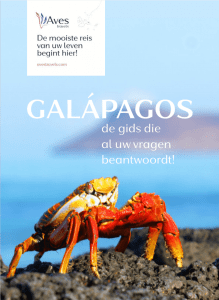Santiago
A lunar landscape made of lava
Highlights
a’a and pahoehoe lava, Galápagos penguin, Galápagos fur seal
Possible encounters
sally lightfoot crabs, Galápagos fur seal, sea lion, Galápagos hawk, ghost crabs, pelican, blue-footed boobie, Galápagos penguin, marine turtle
Explore and experience
The island of Santiago is a fascinating and versatile island. It has three very distinct visitor sites, each with its own unique character!
Puerto Egas
Puerto Egas is located on the northwest side of this island. The visit starts with a wet landing on an intriguing black beach. Here you will find eroded rock formations, full of sally lightfoot crabs. From this beach you continue a path inland to reach the coast again. The liquid lava has formed a surreal landscape. You will marvel at a seemingly endless empty plain and the beautiful structures in the lava. The lava has formed caves that offer a home to the Galápagos fur seal. This is even the best location in the entire archipelago to spot this endemic species! It is the smallest type of fur seal. They resemble the Galápagos sea lion, but distinguishes itself especially by its much thicker fur. That is why you will find it hiding in the shade of the lava caves, shielded from the hot sun.



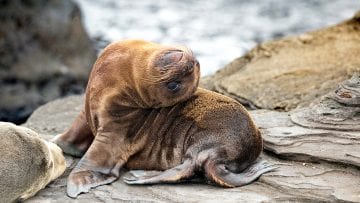
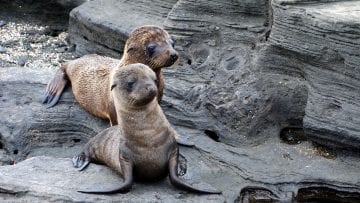
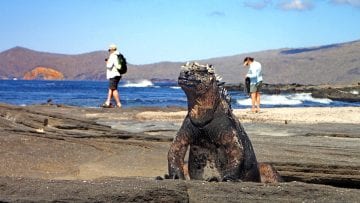

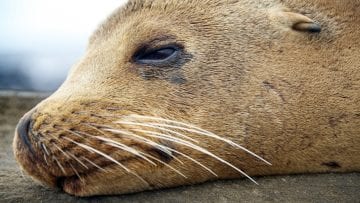
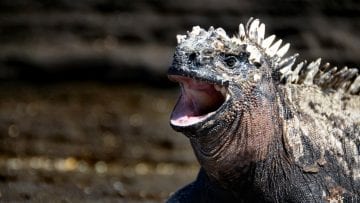
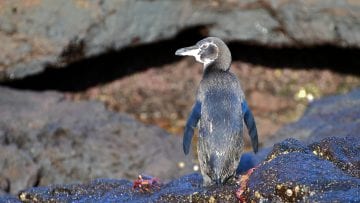

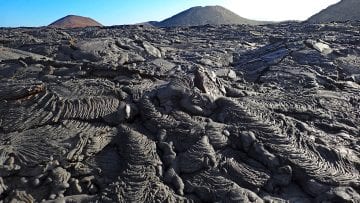
Playa Espumila
The beautiful beach of Playa Espumila is located on the north side of this island. “Espumilla” is Spanish for “foam”, which refers to the foam heads on the waves breaking on the beach. This idyllic, golden beach is surrounded by mangroves. Behind the mangroves is an important breeding ground for tortoises. At this place you have a chance to spot the Galápagos hawk. Pelicans dive for food in the sea and on the beach you see a countless number of ghost crabs.
You snorkel from the beach, which slowly descends into the sea and turns into rocks. Between these rocks you will see many green marine turtles, you have a chance to swim with the Galápagos penguin and it is possible to encounter large schools of rays.
Bahía Sullivan
Bahía Sullivan is located on the east coast of Santiago. You will find a large lava field as far as the eye can see; you feel like you have landed on an alien planet. Look for the two types of lava that have given this landscape their distinct form: a’a and pahoehoe.
The term a’a comes from Hawaiian and stands for “auw-auw” because it will be difficult and painful to walk barefoot on this rock. A’a lava flows have a spiky, pueraceous surface and are made of broken lava blocks. A’a is created when there is fast-flowing lava. The blocks cover a dense core, the most active part of a lava flow. As the sticky lava flows down the slope of the volcano in the core, the solidified blocks are carried along on the surface.
Pahoehoe lava means rope lava: if a lava river flows, while the top is already solidifying, ripples are formed in the crust. These ridges look like a rope.
You will be surprised that even on this inexorable landscape, plant life is possible.
The animal life on this side of the island of Santiago is also very interesting. If you were not lucky to see the Galápagos penguin on the west side of the archipelago, you have a second chance here.
Back to overview